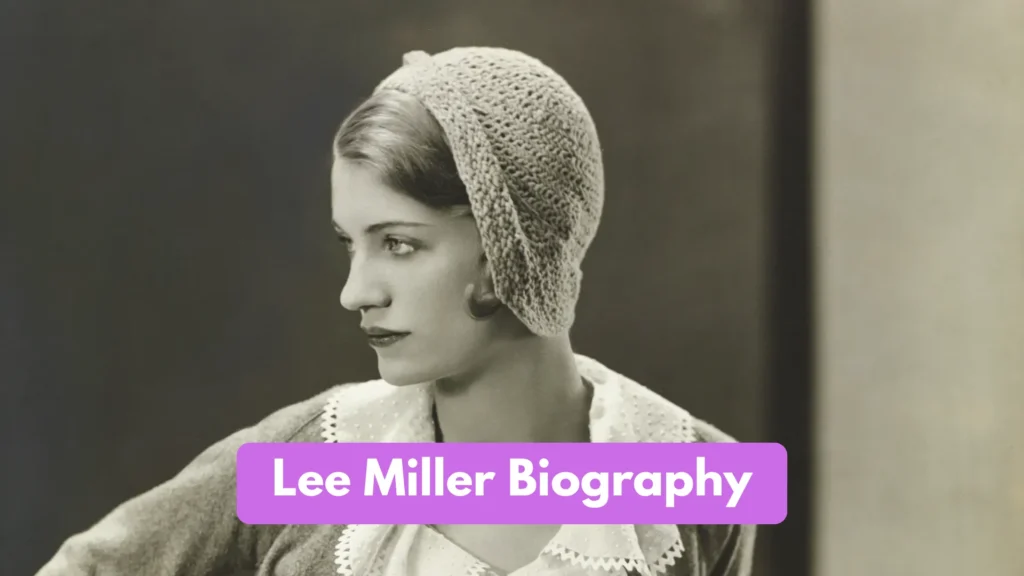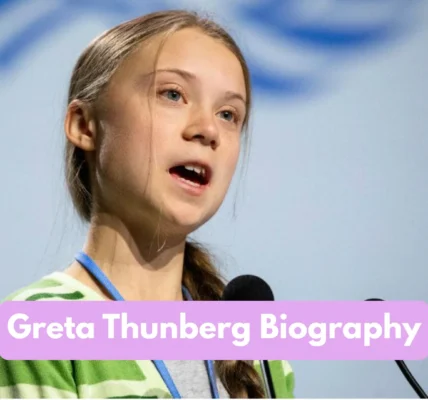
Lee Miller (born Elizabeth Lee Miller) rose from 1920s fashion model to one of the 20th century’s most compelling photographers — a Surrealist collaborator, pioneering studio photographer for Vogue, and a fearless World War II photojournalist whose images still haunt and instruct us.
Her work spans playful Surrealism, fashion elegance, and some of the starkest documentary photos from war-torn Europe.
Early life and becoming “Lee”
Elizabeth Miller was born on April 23, 1907, in Poughkeepsie, New York. As a young woman she chose the name Lee and began a modeling career in New York, where she worked with major photographers and designers of the 1920s. By the late 1920s she was determined to “rather take a picture than be one” — a decision that sent her to Paris and into the orbit of Surrealism.
Paris, Man Ray, and Surrealism
In Paris she met Man Ray and quickly became his student, model, collaborator, and lover. Working alongside Man Ray in the early 1930s, Lee Miller helped develop and popularize experimental darkroom techniques such as solarisation and created striking Surrealist portraits and compositions that blurred the line between fashion and avant-garde art. Her photographic experiments during this period expanded the visual vocabulary of photography itself.
Returning to Britain — Vogue and commercial success
Miller moved to London and established herself as a fashion and portrait photographer for British Vogue and other magazines. Her Vogue work combined modern studio technique with a sharp editorial eye, making her one of the few women at the time to command high-profile photographic assignments. As World War II began, Miller’s career shifted again—this time toward reportage.
War photographer: the Blitz, liberation, and concentration camps
When male staff went to war, Miller increasingly took on assignments for Vogue that sent her to the front and to devastated European cities. As a war correspondent she documented the London Blitz, the liberation of Paris, and later the liberation of Nazi concentration camps such as Buchenwald and Dachau. Those images — raw, unflinching, and often intimate — helped shape public understanding of wartime reality and demonstrated Miller’s unique ability to translate human catastrophe into unforgettable pictures.
One of the most famous and talked-about moments from Miller’s wartime reportage was her photograph of herself taking a bath in Hitler’s Munich apartment bathtub — an image that has been interpreted in many ways, from irreverent triumph to complicated moral provocation. Miller also photographed the aftermath of atrocities and the everyday human details that conveyed the scale of the horror.
Techniques, style and distinguishing traits
Across genres, Miller combined technical mastery with psychological insight. Her Surrealist work played with double meanings, solarisation, and staged metaphor; her fashion photography balanced glamour with candidness; and her wartime images put the viewer close to living subjects and scenes of destruction. Miller’s photographs are notable for compositional clarity, a sense of immediacy, and a refusal to sentimentalize.
Personal life, marriage, and later years
After the war Miller’s life became more settled but also more private. She married British artist Roland Penrose in 1947 and they had a son, Antony Penrose, who later became a key champion of his mother’s archive and legacy. Miller eventually lived at Farleys House in East Sussex, England, where much of her archive and many of her final portraits remained. Her later years were also marked by struggles with depression and alcoholism — themes that biographers and curators have explored as part of understanding her complex life.
Rediscovery and legacy
For decades after her death (she died July 21, 1977), Lee Miller’s work was partially overshadowed by the men she’d worked with and the ephemerality of magazine publishing. In the late 20th and early 21st centuries her son, historians, and major institutions helped reassemble her archive and stage retrospectives that established her reputation anew — as a Surrealist artist, fine-art photographer, and trailblazing female war correspondent. Modern exhibitions and publications continually re-evaluate her importance to fashion photography and photojournalism.
Frequently Asked Questions (FAQs)
Q1: When and where was Lee Miller born?
A: Lee Miller was born Elizabeth Miller on April 23, 1907, in Poughkeepsie, New York.
Q2: Was Lee Miller primarily a model or a photographer?
A: She began as a highly successful fashion model but chose to pursue photography, becoming a celebrated Surrealist photographer and Vogue studio photographer before turning to wartime photojournalism.
Q3: What is Lee Miller famous for during World War II?
A: Miller is famous for her wartime reportage — documenting the London Blitz, the liberation of Paris, and the liberation and aftermath of Nazi concentration camps, producing images that remain historically significant.
Imperial War Museums
Q4: Did Lee Miller work with Man Ray?
A: Yes. In Paris she collaborated closely with Man Ray in the early 1930s; together they worked with experimental techniques like solarisation.
Q5: What are some iconic Lee Miller photos to look for?
A: Notable images include her solarised Surrealist portraits from the 1930s, fashion work for Vogue, her wartime images of ruins and victims, and the famous photograph of her in Hitler’s bathtub, taken in 1945.
Q6: Where can I see Lee Miller’s photographs today?
A: Major museums, galleries, and specialized archives (including the Lee Miller Archives and institutions holding exhibitions and retrospectives) regularly feature her work. Recent and upcoming retrospectives have been held at prominent venues.
Conclusion
Lee Miller’s life resists easy summary. She was at once a celebrated model, a daring experimental artist, and a witness to some of the darkest and most defining moments of the 20th century. Her images move between elegance and atrocity, wit and shock — and that complexity is precisely why she remains such a compelling figure. Through revived exhibitions and continuing scholarship, Miller’s work now occupies the place it always deserved: at the crossroads of art, fashion, and history.




